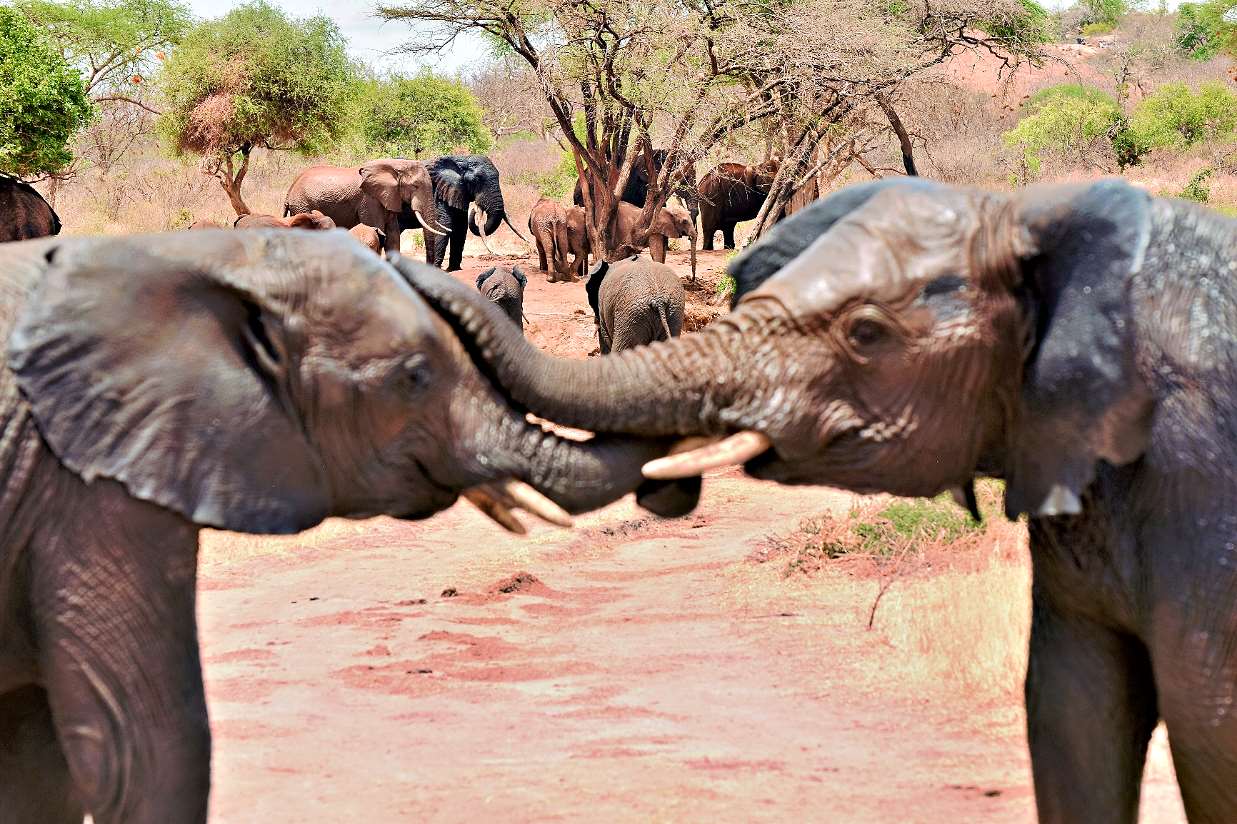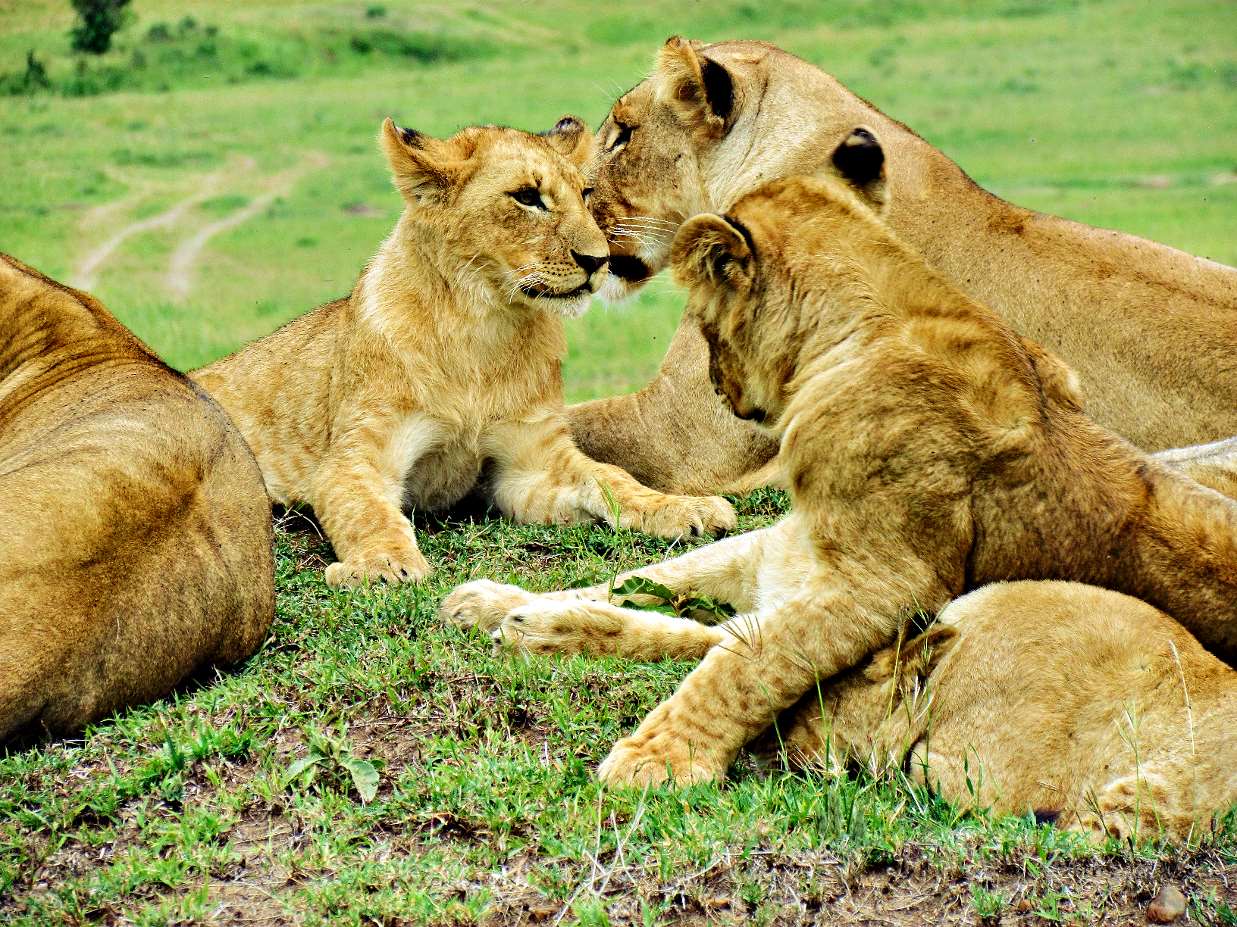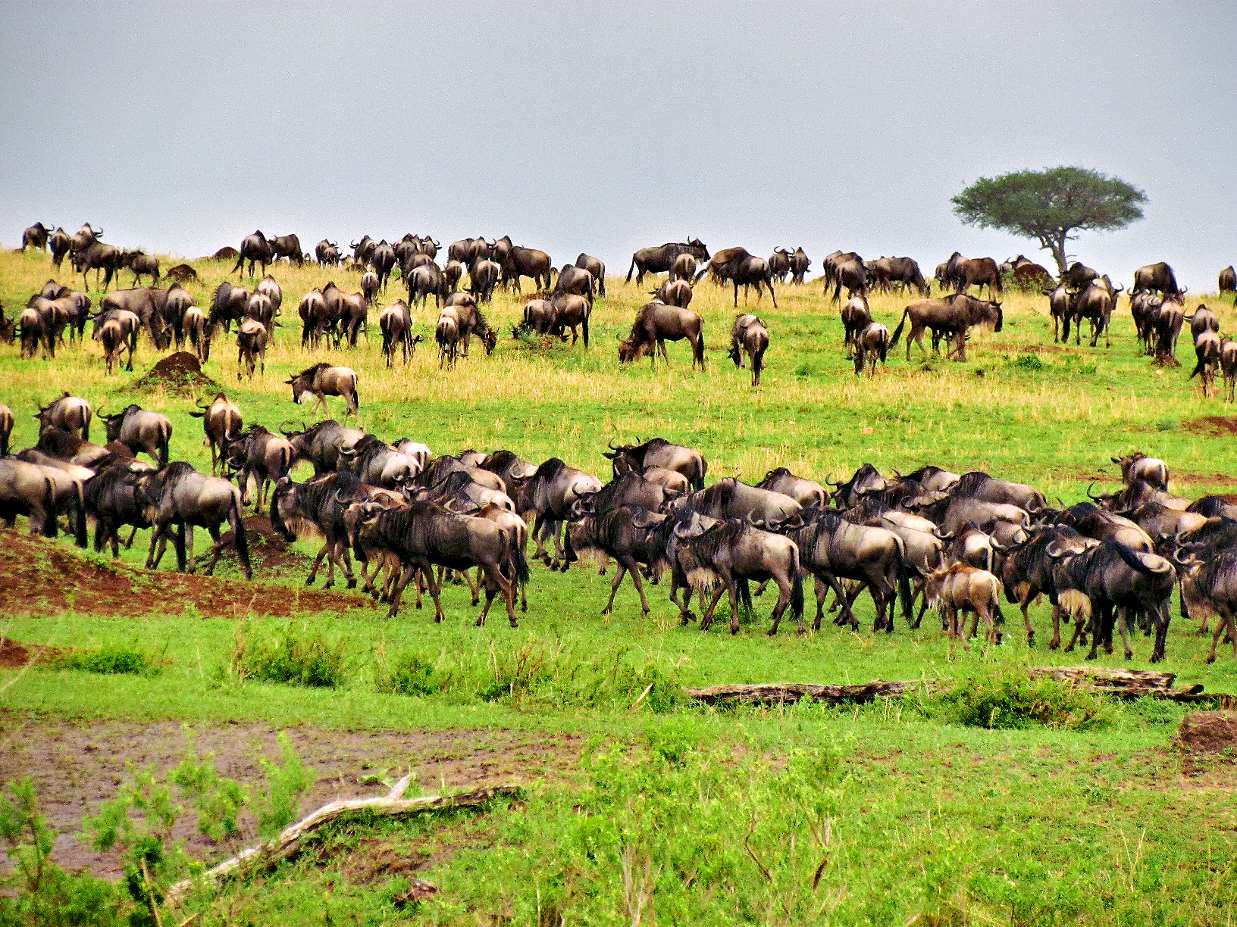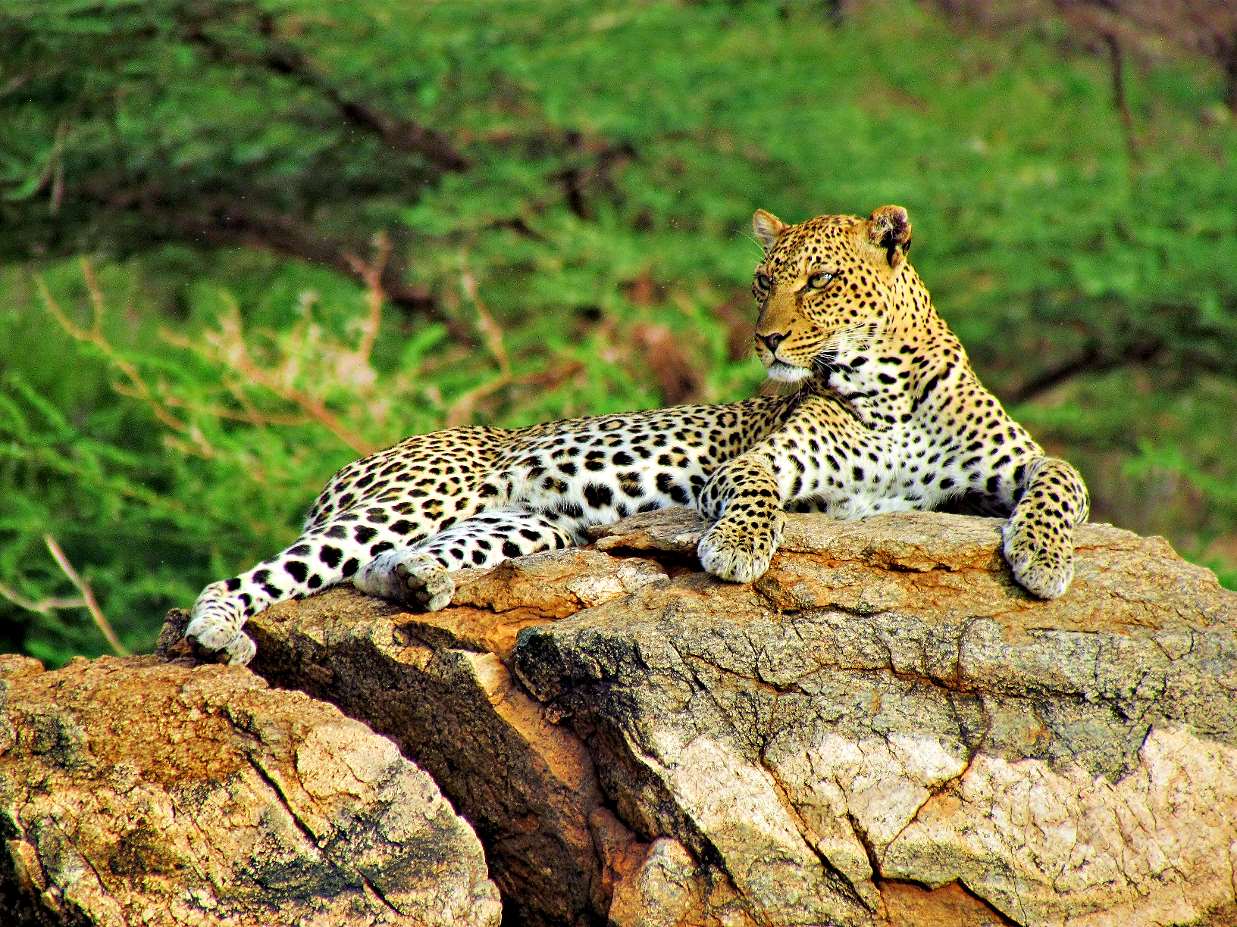Tanzania is a paradise for wildlife lovers and adventure seekers, boasting some of the world’s most famous national parks and game reserves. From the vast plains of the Serengeti to the otherworldly beauty of the Ngorongoro Crater, Tanzania offers unforgettable safari experiences filled with thrilling wildlife encounters and stunning landscapes. With StarBound Adventures, your Tanzanian safari will be crafted to perfection, ensuring you experience the magic of these remarkable parks firsthand. Let’s explore the top national parks in Tanzania that should be on your bucket list.
1. Serengeti National Park
The Serengeti is Tanzania’s crown jewel and one of the most famous wildlife parks in the world. Known for its endless savannahs and the awe-inspiring Great Migration, this UNESCO World Heritage Site is the ultimate safari destination.
What to Expect: The Serengeti is synonymous with the Great Migration, where over 1.5 million wildebeest, 200,000 zebras, and gazelles migrate in search of greener pastures. This spectacular journey, accompanied by predators like lions, cheetahs, and hyenas, is one of nature’s most dramatic events. Beyond the migration, the Serengeti offers year-round wildlife viewing, including elephants, leopards, and countless bird species. Whether you’re exploring by 4×4 vehicle or soaring over the plains in a hot air balloon, the Serengeti will take your breath away.
Best Time to Visit: The Great Migration typically occurs between June and October, with river crossings peaking in the middle of the dry season. However, the Serengeti is fantastic for wildlife viewing year-round.
2. Ngorongoro Crater
Dubbed the “Eighth Wonder of the World,” Ngorongoro Crater is the largest intact volcanic caldera on the planet. This stunning geological feature is home to one of the densest populations of large mammals in Africa, making it a safari destination like no other.
What to Expect: The crater’s floor is teeming with wildlife, from herds of zebras, wildebeest, and buffalo to lions, elephants, and the elusive black rhino. The crater’s unique ecosystem also supports a rich variety of birds, including flamingos that gather in large numbers on the crater’s lakes. The breathtaking landscape, framed by the steep walls of the caldera, creates an idyllic setting for wildlife viewing. Visiting Ngorongoro Crater is like stepping into a wildlife paradise, where the density and diversity of animals ensure you’ll have unforgettable sightings.
Best Time to Visit: Ngorongoro Crater offers excellent wildlife viewing all year long, though the dry season from June to October is ideal for easier sightings.
3. Tarangire National Park
Less famous than its northern counterparts but no less impressive, Tarangire National Park is a hidden gem known for its majestic baobab trees, large elephant herds, and seasonal wetlands. The park offers a more intimate safari experience, away from the larger crowds of Serengeti and Ngorongoro.
What to Expect: Tarangire’s landscape is a mix of open savannahs, acacia woodlands, and swamps, providing a haven for diverse wildlife. The park is famous for its large elephant herds, which gather in impressive numbers around the Tarangire River during the dry season. You’ll also spot lions, leopards, giraffes, and a variety of antelope species. Bird enthusiasts will be delighted by the over 550 bird species found here, including colorful weavers, ostriches, and raptors.
Best Time to Visit: The dry season from June to October is the best time for wildlife viewing, as animals congregate around the water sources.
4. Lake Manyara National Park
Nestled at the base of the Rift Valley escarpment, Lake Manyara National Park offers diverse ecosystems, from lush forests to alkaline lakes. Although smaller in size, it is known for its tree-climbing lions, large flocks of flamingos, and dense populations of elephants.
What to Expect: A game drive in Lake Manyara takes you through dense groundwater forests, open grasslands, and the shores of the lake, which is often tinged pink from flamingos. Elephants are abundant here, and the park is also known for its large troops of baboons and unique tree-climbing lions, which spend their days lounging in acacia trees. The stunning lake is also a magnet for birdlife, making it a favorite spot for birdwatchers.
Best Time to Visit: Lake Manyara is accessible year-round, but the dry season from July to October is the best time for wildlife viewing.
5. Ruaha National Park
Tanzania’s largest national park, Ruaha, is a hidden treasure located in the southern circuit, far from the busy tourist routes. Its remote location makes it a perfect destination for adventurous travelers seeking a more exclusive and authentic safari experience.
What to Expect: Ruaha is known for its dramatic scenery of rolling hills, vast plains, and towering baobab trees. The park is home to Tanzania’s largest population of elephants, as well as a significant number of lions, cheetahs, and leopards. The Great Ruaha River, which runs through the park, is a lifeline for the wildlife, especially during the dry season, attracting hippos, crocodiles, and countless bird species.
Best Time to Visit: The dry season from June to October is ideal for spotting large mammals congregating near water sources.
6. Selous Game Reserve (Now Nyerere National Park)
As one of Africa’s largest game reserves, Selous Game Reserve (recently renamed Nyerere National Park) is an off-the-beaten-path destination offering an untamed and wild safari experience. It’s a UNESCO World Heritage Site with an abundance of wildlife and pristine ecosystems.
What to Expect: Selous offers a unique combination of wildlife and wilderness, with fewer tourists and a more relaxed atmosphere. The Rufiji River runs through the reserve, providing boat safaris that offer sightings of hippos, crocodiles, and waterbirds. Selous is also home to large populations of elephants, lions, wild dogs, and giraffes. Its remote location makes it perfect for those seeking a more private and intimate safari adventure.
Best Time to Visit: The best time to visit Selous is during the dry season, from June to October, when the game is easier to spot.
7. Arusha National Park
Located near the safari capital of Arusha, Arusha National Park is an often-overlooked gem that offers stunning views of Mount Meru and diverse wildlife encounters. Although small, it is home to a rich variety of habitats, from montane forests to open savannahs.
What to Expect: Arusha National Park is ideal for a day safari or as an introduction to Tanzania’s northern safari circuit. The park’s highlight is the stunning Mount Meru, which offers excellent trekking opportunities. Wildlife includes giraffes, zebras, buffaloes, and a variety of primates such as colobus monkeys. Canoeing on Momella Lakes and walking safaris are popular activities that offer a different perspective on the park’s scenery and wildlife.
Best Time to Visit: Arusha National Park is accessible year-round, though the dry season from June to October offers the best weather for wildlife viewing and trekking.
Book Your Tanzania Safari with StarBound Adventures
Tanzania’s national parks are a safari lover’s dream, offering everything from the world-famous Serengeti to hidden gems like Ruaha and Selous. At StarBound Adventures, we specialize in crafting bespoke safari experiences that take you to the heart of Tanzania’s wilderness. Whether you’re after the thrill of the Great Migration, the beauty of the Ngorongoro Crater, or the solitude of the southern parks, we’ll create a safari that matches your dreams.
Are you ready to explore Tanzania’s iconic parks? Contact StarBound Adventures today, and let us plan the ultimate Tanzanian safari that will leave you with memories to last a lifetime.





